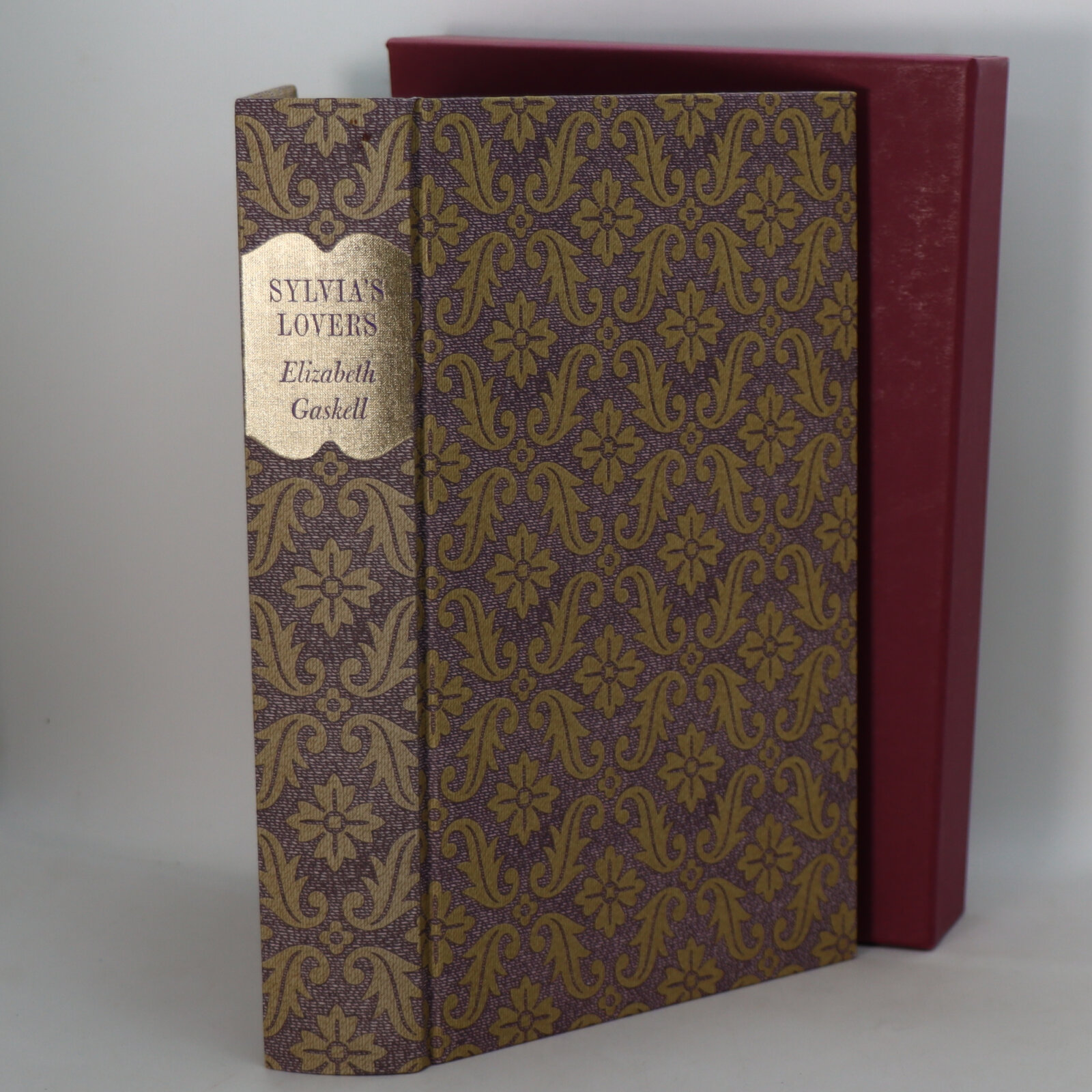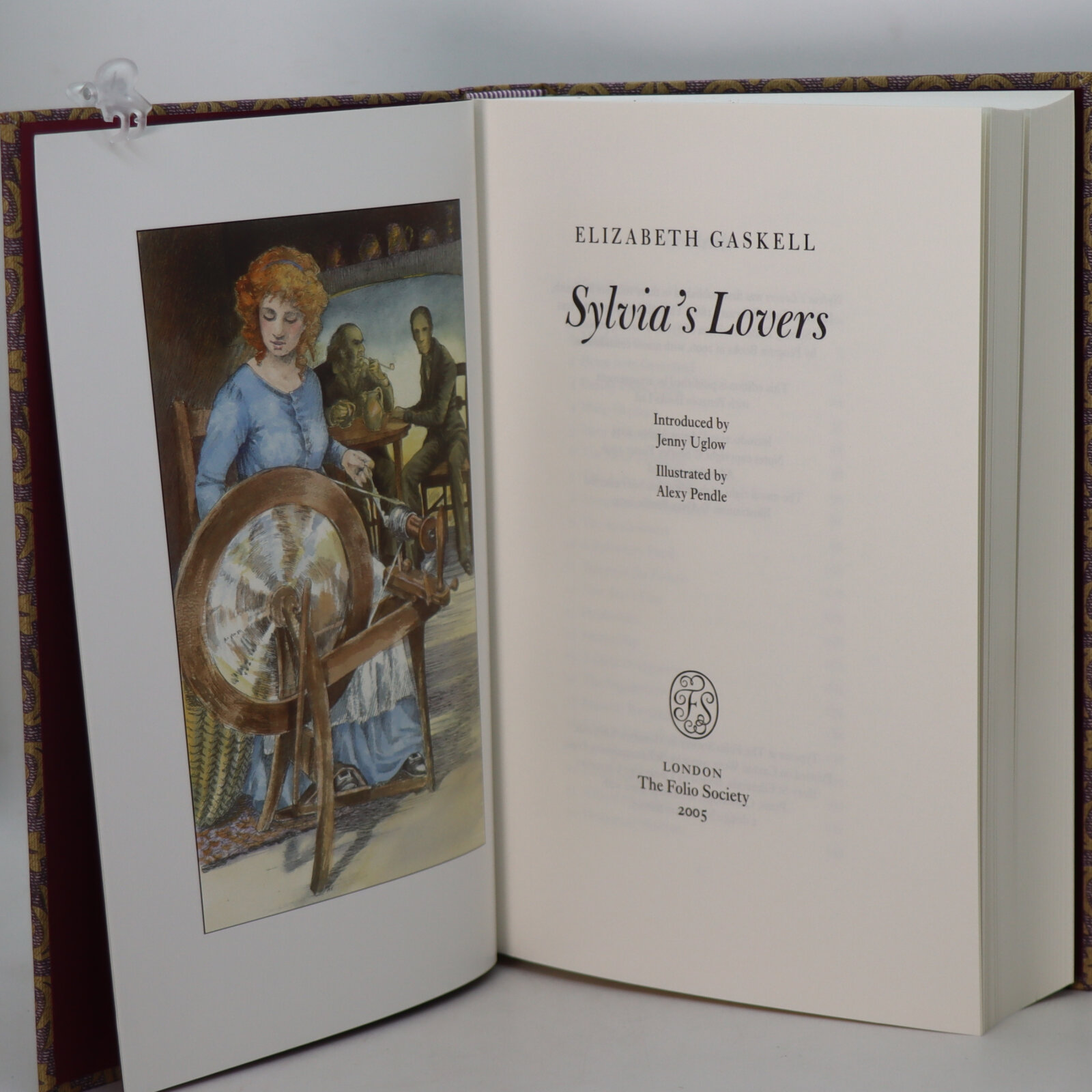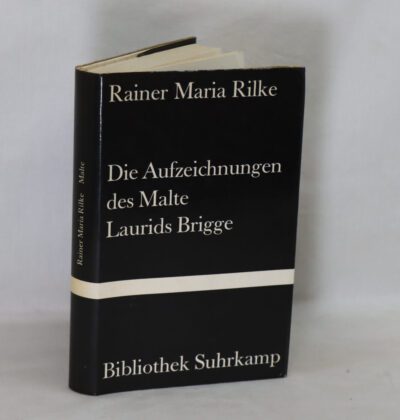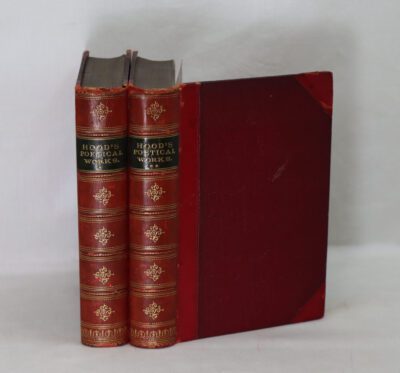Silvia's Lovers.
ISBN: 9780857205902
Printed: 2005
Publisher: The Folio Society. London
| Dimensions | 17 × 25 × 4 cm |
|---|---|
| Language |
Language: English
Size (cminches): 17 x 25 x 4
Condition: Fine (See explanation of ratings)
Item information
Description
In a fitted box. Pink patterned binding with gilt title.
F.B.A. provides an in-depth photographic presentation of this item to stimulate your feeling and touch. More traditional book descriptions are immediately available.
Endorsed by F.B.A. – F.B.A. is endorsing a range of collectable lovingly used book
A solid book encompassing a great tale
Elizabeth Gaskell’s only historical novel, Sylvia’s Lovers, is set in 1790 in the seaside town of Monkshaven (Whitby) where press-gangs wreak havoc by seizing young men for service in the Napoleonic wars. One of their victims is whaling harpooner, Charley Kinraid, whose charm and vivacity have captured the heart of Sylvia Robson. But Sylvia’s devoted cousin, Philip Hepburn, hopes to marry her himself and, in order to win her, deliberately withholds crucial information – with devastating consequences. With its themes of suffering, unrequited love, and the clash between desire and duty, Sylvia’s Lovers is one of the most powerfully moving of all Gaskell’s novels, reputedly described by its author as ‘the saddest story I ever wrote’.
Elizabeth Cleghorn Gaskell (née Stevenson; 29 September 1810 – 12 November 1865), often referred to as Mrs Gaskell, was an English novelist, biographer and short story writer. Her novels offer a detailed portrait of the lives of many strata of Victorian society, including the very poor. Her work is of interest to social historians as well as readers of literature. Her first novel, Mary Barton, was published in 1848. Gaskell’s The Life of Charlotte Brontë, published in 1857, was the first biography of Charlotte Brontë. In this biography, she wrote only of the moral, sophisticated things in Brontë’s life; the rest she omitted, deciding certain, more salacious aspects were better kept hidden. Among Gaskell’s best-known novels are Cranford (1851–53), North and South (1854–55), and Wives and Daughters (1865), all having been adapted for television by the BBC.
Sylvia’s Lovers (1863) is a novel written by Elizabeth Gaskell, which she called “the saddest story I ever wrote”. The novel begins in the 1790s in the coastal town of Monkshaven (modelled on Whitby, England) against the background of the practice of impressment during the early phases of the Napoleonic Wars. Sylvia Robson lives happily with her parents on a farm and is passionately loved by her rather dull Quaker cousin Philip. She, however, meets and falls in love with Charlie Kinraid, a dashing sailor on a whaling vessel, and they become secretly engaged. When Kinraid goes back to his ship, he is forcibly enlisted in the Royal Navy by a press gang, a scene witnessed by Philip. Philip does not tell Sylvia of the incident nor relay to her Charlie’s parting message and, believing her lover is dead, Sylvia eventually marries her cousin. This act is primarily prompted out of gratefulness for Philip’s assistance during a difficult time
following her father’s imprisonment and subsequent execution for leading a revengeful raid on press-gang collaborators. They have a daughter. Inevitably, Kinraid returns to claim Sylvia and she discovers that Philip knew all the time that he was still alive. Philip leaves her in despair at her subsequent rage and rejection, but she refuses to live with Kinraid because of her child.
Philip joins the army under a pseudonym, and ends up fighting in the Napoleonic wars, where he saves Kinraid’s life. Kinraid returns to Britain and marries. His wife, who knows nothing of their history together, informs Sylvia that her husband is a great military leader. Kinraid’s marriage suggests to Sylvia that he was not as faithful to her as she had remained to him, and she then realizes she is in love with Philip. Philip, meanwhile, horribly disfigured by a shipboard explosion, returns to the small Northumbrian village to try to secretly get a glimpse of his child. He ends up staying with the sister of a servant of Sylvia’s deceased parents and rescues his child when she nearly drowns. He is fatally injured while saving his daughter, but his identity then becomes known, and he is reconciled with his wife on his deathbed.
Want to know more about this item?

Related products
Share this Page with a friend












